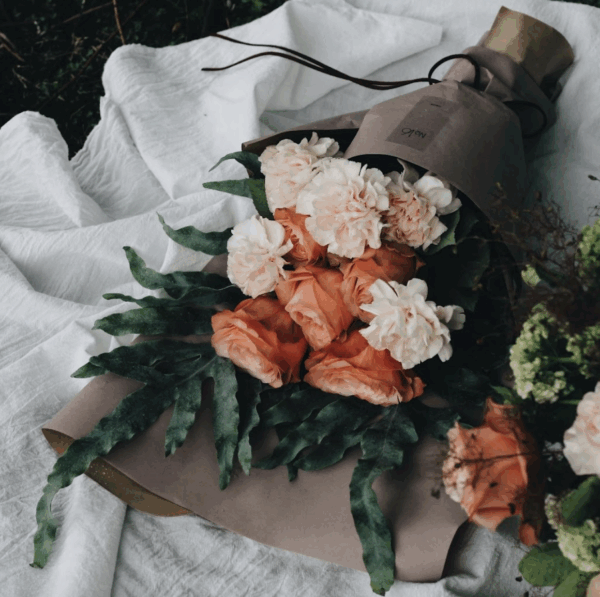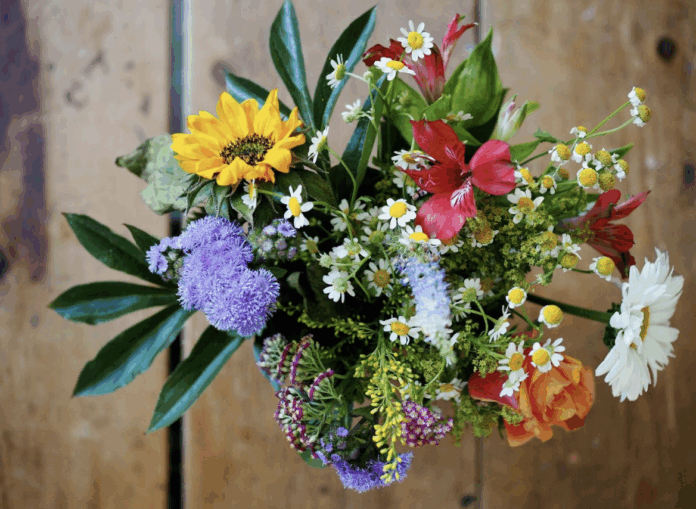We tend to file flowers under “nice-to-have”: a last-minute birthday fix, a wedding backdrop, a polite reflex for funerals. But scratch the surface and you find a living industry that touches mental health, climate policy, labour rights, and the way we design our cities. Flowers are not frivolous; they’re an everyday portal into what a caring, sustainable economy could look like.
The science of small joys
A growing pile of research shows that contact with nature—plants, colour, scent—reduces stress hormones, lowers blood pressure, and measurably improves mood. A vase of fresh stems isn’t a cure-all, but it’s a reliable nudge toward calm at precisely the moments we’re most depleted: post-surgery, after a tough week at work, while grieving. That’s why hospitals increasingly welcome compact, low-allergen arrangements to brighten recovery rooms; why community organisations bring flowers to elder-care facilities; and why people who “don’t do flowers” often become secret converts once they’ve lived with them for a week.
The power here is deceptively simple. Flowers operate on several channels at once: visual contrast that wakes up tired rooms, scent that cuts through mental rumination, and a built-in reminder of impermanence that helps us let go. In an anxious era, that’s not trivial—it’s public health.
The hidden footprint of the global bloom
Of course, a bouquet can also be a carbon bomb. Cut flowers are often flown thousands of kilometres in refrigerated holds, then kept cold through warehouses, trucks, and retail fridges (the “cold chain”). Conventional farms may rely on heavy pesticide regimes and precarious labour. The romantic bunch on your table might carry an invisible trail of emissions and exploitation.
But that’s only one version of floristry. Another is possible—and it’s already here. Slow-grown, seasonal stems; foam-free mechanics; composting and water-wise design; living wages for growers; and transparent provenance all add up to arrangements that are beautiful without the guilt. Independent studios such as Spearwood Florist in Perth, Western Australia, are already prioritising seasonal, locally grown stems and foam-free mechanics—proving bouquets can be both beautiful and low-impact.
Local, seasonal, and foam-free: what sustainable floristry looks like
Sustainable floristry isn’t an aesthetic; it’s a set of choices:
- Seasonal & local where practical. Peonies in mid-winter? Lovely, but likely air freighted. Tulips in spring or dahlias in late summer from a regional grower offer similar delight with a fraction of the footprint.
- Floral-foam free. Those green bricks are petrochemical-based and shed microplastics. Designers are returning to chicken wire, reusable pin frogs, and clever branching to create the same sculptural forms—without the waste.
- Water & waste literacy. Capturing stem off-cuts for compost, refreshing water instead of constant top-ups, and choosing reusable vessels can reduce both costs and landfill.
- Biodiversity matters. Natives and climate-adapted species support pollinators and reduce inputs. They also tell a local story rather than a generic Pinterest mood.
If you’re a customer, you can ask three questions that change outcomes overnight: What’s in season? Can you design foam-free? Who grew these flowers? Good florists love those prompts; they’re an invitation to do their best work.
The economics: why your purchase is political
Large wire services and marketplace apps are convenient, but the fine print can be rough on makers. Middle-man fees can skim 25–40% from an order, leaving the florist to fulfil a Pinterest-perfect photo at a loss. That race to the bottom produces exactly what you’d expect: flat, formulaic designs, cheaper inputs, and harried delivery runs.
Buying directly from an independent florist flips the incentives. Your money goes into the flowers themselves, into local wages, and into the time that elevates an arrangement from adequate to moving. You also get better troubleshooting when the delivery involves a hospital ward, a gated property, or a time-sensitive service.
Rituals that bind us
Flowers sit at the centre of our most intense human moments. They welcome newborns, soften the edges of break-ups, and anchor the choreography of weddings. In grief, they stand in for what we cannot say. Casket sprays as well as wreaths aren’t mere decoration; they’re a communal gesture—colour and form arranged into a sentence we write together: ‘they were loved.’
That communal thread extends into civic life as well. Floral memorials grow at the sites of tragedies. Activists have long used blossoms as peaceful counter symbols to violence. And neighbourhoods rally around street planters, community cutting gardens, and verge flowerings that turn anonymous blocks into places.

Policy: from petals to public good
If flowers touch health, climate, labour, and the fabric of community, then policy should catch up. Here’s a pragmatic, non-romantic agenda that would lift quality while cutting harm:
- Green procurement standards. Councils, hospitals, and government agencies should specify foam-free mechanics and prioritise seasonal, locally grown stems in their contracts, with transparency on provenance.
- Living-wage expectations. Public buyers can set a floor that nudges supply chains toward ethical pay and safer chemical regimes without waiting for slow national reforms.
- Cold-chain efficiency. Incentivise consolidated, electrified delivery runs and off-peak logistics to cut emissions and ease congestion.
- Organics and microplastics rules. Ban floral foam from public venues and support commercial composting streams that accept clean green waste from florists.
- Urban greening at human scale. Fund pocket parks, pollinator corridors, and street plantings with robust maintenance plans. Couple this with community cutting gardens so residents can bring some of that greening home.
- Skills & transition support. Small studios need help to go foam-free, adopt reusable mechanics, and strengthen local grower networks. Short trainings and micro-grants go a long way.
These aren’t culture-war proposals; they’re operational upgrades that save money over time, reduce waste, and produce better spaces.
A buyer’s quick guide to better bouquets
You don’t need a policy lever to make a difference. Use these simple moves the next time you order:
- Lead with the occasion and mood. “Calm and hopeful for recovery,” “joyful and bright for a 5-year-old,” or “elegant and low-scent for a shared office” are better briefs than a 30-item stem list.
- Ask for seasonal. You’ll get peak-quality flowers that last longer and look more natural.
- Request foam-free. Most skilled florists can accommodate; some already design this way by default.
- Mind the setting. Hospitals often prefer compact, low-allergen designs. For funerals, confirm the delivery window and exact venue/chapel details.
- Invest in the vessel. A reusable vase or bowl elevates the gift and reduces waste.
- Write a real card. Two lines that sound like you are worth more than any extra stem.
- Buy direct. Call or order from the florist’s own site when you can; you’ll get better value and fewer platform fees siphoning off your spend.
- Be flexible on colour. Give a palette— “soft pastels,” “greens and whites,” “sunny brights”—and let the designer riff with what’s freshest.
Flowers as strategy, not garnish
We live in a moment dense with crises: climate, loneliness, the relentless speed of digital life. It’s tempting to treat flowers as a decorative afterthought, the single-use balloon of the natural world. But done well—ethically sourced, thoughtfully designed, integrated into public spaces—flowers become small, daily acts of repair. They soften institutions, humanise care, and remind us that beauty is not a luxury but a fuel.
If you’re sceptical, run a personal experiment. Put a modest, seasonal arrangement on your table this week. Notice how often you look at it without meaning to, how it resets the room, how visitors stand a little taller in its company. Then imagine that effect scaled across workplaces, clinics, council chambers, classrooms, and footpaths. That’s the wager: not that flowers solve our biggest problems, but that they help us act like the kind of people who can.
In the end, the politics of flowers is the politics of attention. What we notice, we care for. What we care for, we improve. Choose well, buy close to home, ask better questions, and support the makers who are already doing the right thing. The bouquet in your hands can be a message to someone you love—and a quiet vote for the world you want.


